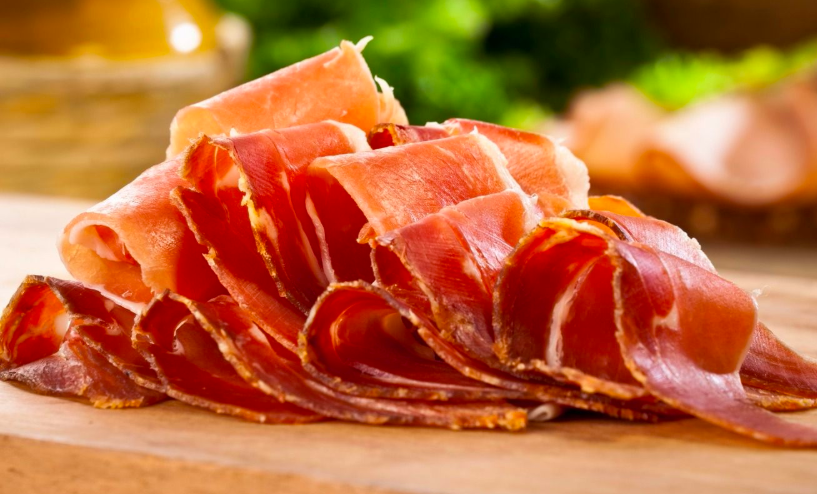How to make prosciutto at home

If you’ve ever wondered how to make a basic prosciutto, then wonder no more! Paul Peacock’s book includes lots of prosciutto recipes for you to try at home. But if you need another reason as to why you should make prosciutto at home, then surely showing off how you’ve cured and preserved your meat to your carnivorous nearest and dearest is the way forward? From bacon and ham, through to making your own salamis, pates, confits and galantines, Paul’s book has it all. So the next time someone asks you how to cure meat or how to cure pork, using Paul’s knowledge and expertise, you can give simple, step-by-step instructions to it all!
How to make a basic air-dried prosciutto
1) Buy a ready-boned piece of pork leg, or bone one yourself.
2) Prepare your cure – mostly just curing salt.
3) Apply the salt cure and press into a suitable container for around 3 to 4 days per kilo.
4) Wash your ham to remove all salt from the surface and dry with a clean towel or with kitchen paper towels.
5) Weigh and wrap in two layers of muslin and hang for six months to a year in a cool, dry place.
Boning and salting
1) Locate the aitchbone (the buttock or rump bone) in the cut surface of the meat, where the joint was removed from the pig.
2) Carefully cut round this using a very sharp boning knife, staying as close to the bone as possible. You will find the actual ball and socket, a short way into the body of the meat from the large cut end of the joint, which you can slice through.
3) Cut through the skin along the path of the thighbone and down to it, following the contours of the bone, cutting all the way round the bone to remove it. The inside can be trimmed before being salted, reformed and the two edges sewn up with a simple blanket stitch using twine and a trussing needle.
4) The piece of meat that is not covered in skin can then be completely rubbed with salt. Fill the hole where the knee would have been completely with salt, so there is no meat left uncovered.
5) Line the bottom of a lidded box with 2cm cure before placing the meat on top. Completely cover the rest of the meat with salt, making sure it comes up the sides and covers the top by a couple of centimetres. Place a big board that fits the box on the top of this and then a heavy weight. The weight is there to get as much blood as possible out of the leg.
6) Keep the ham in a cool dry spot for a week before removing the weight. There will be some liquid that will make the salt mushy. Remove this and replace with fresh cure. Ensure the whole piece of meat is covered with cure again before replacing the lid. Do not replace the weight.
7) Cure the meat for three to four days per kilo. For example, a 6kg pork will take around twenty days to cure. Look for a real hardening of the meat and a good colour change.
For more information about making ham and other salted meats, read Make Your Own Bacon And Ham and other salted, smoked and cured meats (£9.99, Robinson) by Paul Peacock.







